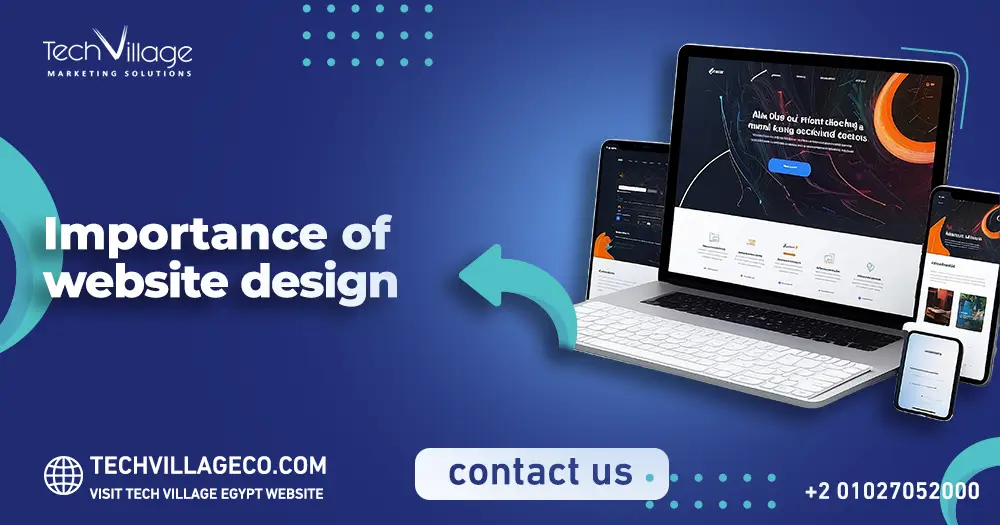An effective business website design should achieve its intended function by conveying your specific information while attracting visitors. a lot of factors, such as color, imagery, simplicity, and functionality, contribute to a good website design, so when designing a website, there are many key factors that affect how the website is perceived.
Creating a great user experience includes ensuring that your website design is optimized for usability (form and aesthetics) and easy to use (functionality).
Principles of perfect business website design
1- business website design simplicity
This is the best approach when considering the user experience and usability of your website. Here is how to achieve simplicity through design.
Colour
Colour has the ability to convey information and evoke emotional reactions. Finding a palette that suits your brand will enable you to influence the behaviour of your customers towards your brand. Limit color choices to less than 5 colors. Complementary colors work well. Beautiful color combinations can increase customer engagement and make users feel good.
Typography
Typography plays an important role in your website. It attracts people’s attention and serves as a visual interpretation of the brand’s voice. The font must be legible, and only up to 3 different fonts can be used on the website.
Images
Images are all visual aspects used in communication. This includes photography, illustrations, videos, and various graphics. All images should be expressive and reflect the spirit of the company and reflect your brand personality.
Most of the initial information we convey on the website is visual. As the first impression, it is important to use high-quality images to give visitors a professional and credible impression.
2- Visual hierarchy
Visual hierarchy is the type of arrangement of elements in business website design. This is done through size, color, image, contrast, typography, white space, texture, and style. One of the most important functions of the visual hierarchy is to establish a focal point; this will show the visitor where the most important information is.
3- F-shaped patterns
F-based patterns are the most common way visitors scan text on your business website design. Eye-tracking research found that most of what people see is in the upper left corner of the screen. The F-shaped design mimics our natural Western reading pattern (from left to right, top to bottom). An effectively designed website will use natural page reading patterns.
4- business website design Navigation
It is the way the search system is used on websites, and visitors can interact on these websites and find the content they are looking for. If business website design navigation is not good, visitors will give up and find what they need to search elsewhere. Keeping navigation simple, intuitive, and consistent on every page is the key.
5- business website design Accessibility
The goal of web accessibility is to create a website that anyone can use, including people with disabilities or restrictions that affect their browsing experience. In business website design, your job is to consider these users in your UX plan. visual effects, and written and visual content. The Web Content Accessibility Guidelines (WCAG) were developed by the Web Accessibility Initiative and the World Wide Web Consortium to develop guidelines for Web accessibility. Broadly speaking, these guidelines state that websites should:
- perceivable visitors understand the content on your website.
- Your website functions should be able to be implemented in different ways. Easy to understand all content and alerts can be easily understood.
- Robust-Your website can be used with different assistive technologies, devices, and browsers.
6- business website design Regularity
One of the great challenges of web design is to balance originality and your expectations. Most of us are Internet experts, and over time we have become accustomed to certain conventions. Such conventions include:
- Place a logo in the upper left corner (or middle) of the page.
- Make the logo clickable so that it always brings visitors to the homepage.
- When hovering the mouse over links and buttons, they will change color/appearance. Use the shopping cart icon on an e-commerce website.
- The icon also has a number plate, indicating the number of items in the shopping cart. Make sure that the image slider has a button that the user can click to manually rotate the slideshow.
No matter how dazzling the building looks, if you stumble upon an uneven staircase or cannot escape in a fire, you may prefer to stay outside. Likewise, you can create an unforgettable experience while meeting user expectations. If you violate your users’ expectations, they may feel uncomfortable or even frustrated with your business website design
7- business website design Credibility
Adhering to web conventions will give your website credibility. In other words, it improves the level of trust conveyed by your business website design.
If you work hard to create a website that provides the best user experience, credibility can be achieved.
One of the best ways to increase credibility is to clearly and honestly describe the products or services you sell. Don’t let your visitors search dozens of pages to find your product.
Directly on your homepage, use some space to explain the value behind what you do. Another credibility tip:
- there is a pricing page, which is also linked on the homepage.
- Instead of forcing people to contact you for more pricing information, it is better to clearly indicate your price on your website.
- This makes your business look more trustworthy and legitimate.
8- User-centricity
In the final analysis, usability and user experience depend on the preferences of the end-user. After all, if you are not designing for him, who are you designing for? Therefore, while the principles listed in this list are a good starting point, the ultimate key to improving site design is to conduct user testing, collect feedback, and implement changes based on what you have learned.
And don’t bother yourself to test usability. You have invested a lot of time in its design, which has brought your own biases into the equation. Get testers who have never seen your site, just like any first-time visitor. This is very important in business website design.

 AR
AR



